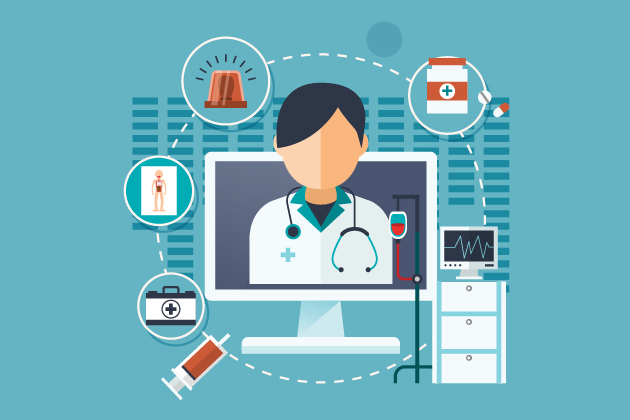The COVID-19 pandemic has brought about a significant shift in the way healthcare is delivered, with telehealth becoming a crucial tool in the fight against the virus. Telehealth, also known as telemedicine, is the use of technology to provide medical services remotely. This can include virtual consultations, remote monitoring, and the use of electronic communication to share medical information.
One of the biggest advantages of telehealth during the pandemic has been the ability to reduce the spread of the virus by limiting in-person visits to healthcare facilities. Virtual consultations have allowed patients to receive medical attention from the safety of their own homes, reducing the risk of exposure to the virus. This has been especially beneficial for people who are at high risk for COVID-19, such as the elderly and those with underlying health conditions.
Telehealth has also played a vital role in managing the surge of COVID-19 cases. With hospitals and clinics overwhelmed by patients, telehealth has helped to ease the burden on the healthcare system by allowing doctors to see more patients in a shorter amount of time. It has also helped to reduce the need for personal protective equipment (PPE), which is in short supply during the pandemic.
The use of telehealth has also been expanded in many countries due to the pandemic. Many governments have temporarily relaxed regulations and laws on the use of telehealth, making it easier for healthcare providers to use the technology. This has led to an increase in the number of patients using telehealth services, and it is likely that many of these changes will become permanent even after the pandemic is over.
However, telehealth is not without its challenges. One of the main challenges is ensuring that patients have access to reliable and high-speed internet, as well as the necessary equipment for virtual consultations. Additionally, there is a need for healthcare providers to be trained in the use of telehealth technology and to ensure that patient privacy and security are protected.
In conclusion, telehealth has played a vital role in the fight against COVID-19. It has helped to reduce the spread of the virus and ease the burden on the healthcare system. The pandemic has accelerated the use of telehealth, and it is likely that it will continue to play a significant role in healthcare delivery even after the pandemic is over. It is important that governments, healthcare providers, and patients work together to ensure that telehealth is implemented in a way that is inclusive, equitable, and that meets the needs of all patients.
Source: AI and Freepik



